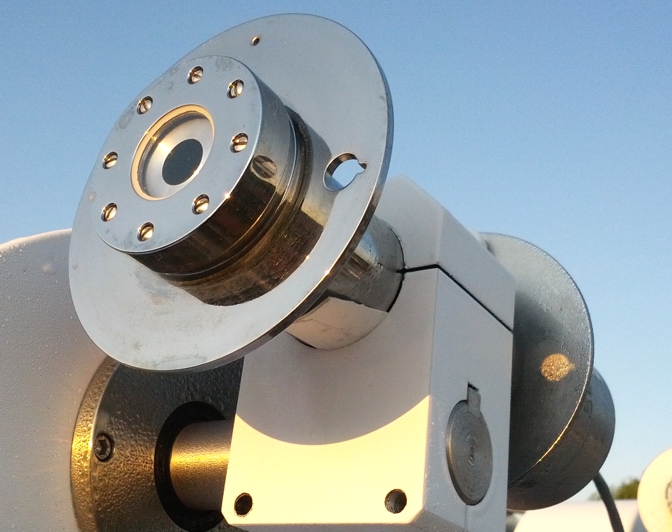Normal Incidence Pyrheliometer
Model sNIP
A pyrheliometer mounted on a solar tracker is used to measure the Direct Beam Solar Irradiance (DNI) from the sun. Historically, the preferred field of view for Pyrheliometers was based on a 10:1 ratio which equated to approximately 5.7°. Due in part to the commercialization of the Eppley AHF Cavity Radiometer as a Primary Standard and advances in accuracy of Automatic Solar Trackers (such as the Eppley SMT Tracker), the preferred FOV for pyrheliometers is now 5º. The new Eppley sNIP has a 5° FOV. In fact, it has the exact same geometric dimensions as used in the AHF. Additionally, internal changes were employed to increase the response time and reduce conduction and convection issues and a thermistor is included for those who wish to measure the instrument temperature.
As a result, the new Normal Incidence Pyrheliometer, Model sNIP meets the performance specifications of an ISO Secondary Standard* and a WMO High Quality Pyrheliometer.
*To officially be considered a Secondary Standard, the pyrheliometer in question must be calibrated with WRR traceability through a Primary Standard Pyrheliometer such as the Eppley AHF Cavity Radiometer. EPLAB Calibrations are typically performed against a Secondary Standard Pyrheliometer. At the customer’s request and for an additional fee, this calibration can be performed against our WRR traceable AHF Cavity Radiometer. Please contact Eppley for additional information.
** There has been much discussion on “uncertainty” and how it pertains to solar measurements. The RSS of the 9060 specifications results in an uncertainty of approximately 1.5%. The typical uncertainty of Eppley’s factory calibrations are less than 1%. The stated uncertainty of the WRR is 0.4%. Evidence from direct comparisons of sNIP to AHF show the sNIP is capable of hourly averages better than 2% and daily averages better than 1% (assuming proper tracking and clean windows).
CLICK HERE to download Specifications [PDF]
| Application | Working Standard |
| or Network Measurements | |
| Classification | Secondary Standard* |
| Traceability | WRR through Primary |
| or Secondary |
| Spectral Range | 250-3000 nm |
| Field of View | 5° |
| Output | 0-10 mV |
| Sensitivity | approx. 8 μV / Wm-2 |
| Impedance | approx. 200 Ω |
| 95% Response Time | 5 s |
| Zero Offset | 1 Wm-2 |
| Non-Stability | 0.5% |
| Non-Linearity | 0.2% |
| Spectral Selectivity | 0.5% |
| Temperature Response | 0.5% |
| Calibration Uncertainty** | < 1% |
| Measurement Uncertainty** | |
| Single Point | < 5 Wm-2 |
| Hourly Average | approx. 1% |
| Daily Average | approx. 1% |



